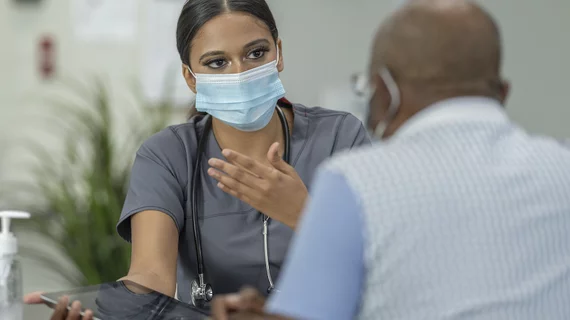Cancer survivors face a 42% higher risk of CVD
Cancer survivors appear to be at significantly higher risk for cardiovascular disease, including heart failure and stroke, according to a new study published in the Journal of the American College of Cardiology.[1]
The study followed over 12,000 patients for more than a decade, tracking whether they were diagnosed with cancer during that time and whether they had any incident cardiovascular disease outcomes. Resulting data showed that those who were cancer survivors had a 42% greater risk of cardiovascular disease than those who were not.
“Cardiovascular disease is one of the leading causes of death among some cancer survivors, and that risk is oftentimes neglected,” says first author Roberta Florido, M.D., M.H.S., assistant professor of medicine and director of cardio-oncology at Johns Hopkins University, in a statement about the study. “We hope our research increases awareness of heart disease risk in those who survive cancer and that health care providers actively reinforce the importance of prevention.”
Risk levels varied slightly between different types of cardiovascular disease, with cancer survivors having a 52% higher risk of developing heart failure and a 22% higher risk of developing stroke than people without cancer, but no significant differences in coronary heart disease risk.
Additionally, increases in risk levels were greater for some types of cancer than others; the study found significant CVD risk associations for breast, lung, colorectal, and hematopoietic and lymphatic cancers, yet prostate cancer was not associated with higher risk.
Doctors can use this knowledge to promote CVD interventions, especially as cancer survivors live longer thanks to improved treatments.
“Cancer survivors are a high-risk population and should be prioritized for interventions that lower the chance of heart disease later in life,” says Elizabeth Selvin, Ph.D., M.P.H., professor of epidemiology at the Johns Hopkins Bloomberg School of Public Health and senior author of the study.
The study’s authors cite several possible reasons behind their findings of higher risk, including the fact that similar risk factors can predispose patients to both cancer and cardiovascular disease. Some previous studies have found higher incidence of factors such as hypertension, diabetes, excess weight, chronic kidney disease, or a history of smoking in cancer survivors. However, the current study—which selected participants before any of them were diagnosed with cancer—found that, aside from smoking, those who developed cancer did not have a significantly higher burden of preexisting CVD risk factors.
In any case, the excess CVD risk for cancer survivors is not explainable by traditional risk factors alone, leading the authors to highlight other possible underlying causes, such as cancer treatments which may cause cardiac toxicity, and the need for further study.
“Elucidating the mechanisms underlying the excess risk of CVD among adult cancer survivors, from treatment toxicities to shared biological pathways, is needed in order to define novel strategies for predicting and preventing CVD in this population,” Florido says.
Reference:
1. Florido R, Daya N, Ndumele C, et al. Cardiovascular Disease Risk Among Cancer Survivors. Journal of the American College of Cardiology. July 2022. DOI:.10.1016/j.jacc.2022.04.042.
Related Content:
Cancer, cancer-related death much more common among heart failure patients
'Promising' new data on TMVr among cancer patients
Intermittent fasting helps breast cancer survivors limit their CVD risk
Heart failure associated with an increased risk of cancer
